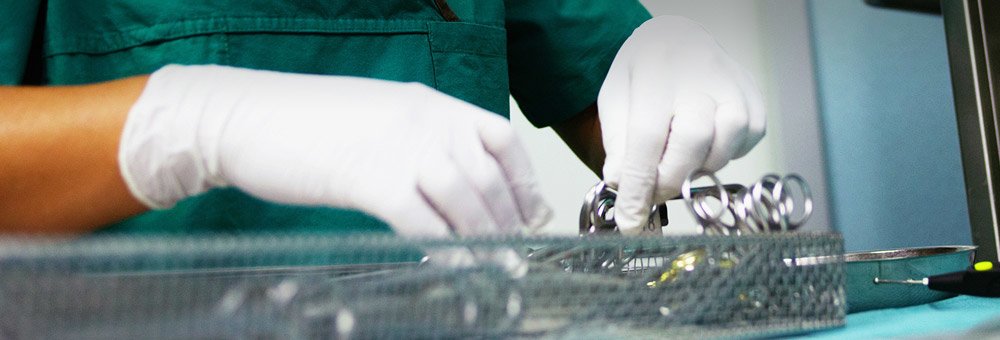
You are here: Home > Our Services > Specialised Procedures > Endometriosis
Laser Surgery for Endometriosis

Gilman Welply FRCS FRCOG
Consultant Obstetrician and Gynaecologist, St Anthony's Hospital
For appointments 020 8337 6691
By Gilman Welply FRCS FRCOG Consultant Gynaecologist, St.Anthony’s Hospital.
Day-surgery using a YAG laser can offer a more acceptable solution than hysterectomy for younger women for relief of symptoms of endometriosis.
Endometriosis is a frequent cause of pelvic pain and distress in women of reproductive years. It is almost unknown before puberty but the incidence increases up to 10% in women between 15 and 45 years and declines again after the menopause.
Endometriosis is a significant cause of pain and suffering in younger women and may also be associated with subfertility in 30% of couples. If a woman is sure that her family is complete and her symptoms warrant it, hysterectomy is a very effective way of treating severe disease.
In other cases laparoscopy with laser offers a considerably less drastic solution.
Endometriosis is a condition where deposits of cells, like those that line the uterus, are found in the pelvis but outside the uterus. They are usually found behind the uterus on supporting ligaments (utero-sacral ligaments) and on the ovaries. The tissue can occur on other sites in the pelvis including the bladder and bowel and can be found in scar tissue (Caesarean or episiotomy) and rarely in other parts of the body. The origin of this tissue is uncertain but it is known that many women when they have a period will bleed back down the Fallopian tubes and this blood can carry cells from the uterus that then implant themselves in the pelvis and grow. There is sometimes a family history of endometriosis and so there may be a genetic component to the condition.
Symptoms
The endometriotic tissue behaves in the same way as the lining of the uterus and thus with each period it will swell, cause inflammation and bleeding which leads on to scarring and cyst formation. This produces pain in the pelvis which often starts at mid-cycle and increases reaching a peak with the onset of the period and then decreases. The period itself may be heavier with the passage of clots and more prolonged. There may be backache, often worse first thing in the morning and pain with bowel movements and bladder symptoms as well. Deep pelvic pain with and following intercourse is a frequent symptom and may contribute to the fertility problems associated with the condition. Another puzzle is the fact that the symptoms are not related to the extent of the disease and frequently, women with minimal change will have severe and distressing symptoms.
Fertility problems
It is uncertain how endometriosis causes problems with conception when there is only minimal or mild disease present. With severe disease, where there is disruption and distortionof the pelvic anatomy, infertility is more understandable. However, studies have shown that treating endometriosis improves the fertility rate.
Diagnosis
A diagnosis can often be made from a careful history and examination but laparoscopy is the most accurate way of assessing the situation. Laparoscopy is a day-case procedure performed under a light general anaesthetic in which a telescope is passed into the abdomen through a small incision under the navel. This allows the pelvic organs to be inspected and the extent of any endometriosis accurately recorded. Ultrasound scans can be helpful in diagnosis of severe disease but are of little help with minimal disease. The appearance of endometriosis at laparoscopy varies from small lesions that can be white, red or blue-black and are often associated with changes in the peritoneum and increased vascularity. The ovaries can also be a site of endometriosis with cysts (endometriomas) and adhesions. The disease is usually staged from minimal to mild, then moderate and severe. With the last two stages there is major scarring with cyst formation and distortion of the pelvic anatomy.
Treatment
Treatment will depend on symptoms and the extent of distress being experienced. It can range from explanation and reassurance, with simple analgesics for the pain, to hormone therapy or some form of surgery.
The hormones available include the ‘pill’ and progesterones which may just mask symptoms and not actually treat the problems. There are specific treatments such as Danazol and Gestrinone, and then hormones which create a temporary menopause (Zoladex, Buseriline, Synarel). The use of these drugs should be discussed and the risks and benefits explained. They are usually taken for six months at a time and by stopping the period allow the endometriosis to heal. However, active endometriosis will often return in 1 –2 years following treatment with hormones.
Surgery
For severe disease producing symptoms that interfere with life and where the woman does not want more children, hysterectomy may be the treatment of choice. This is of course a major procedure requiring 4 – 5 days in hospital and 3 – 4 weeks convalescence afterwards. In some but not all women, removal of both ovaries may be wise and in this instance hormone replacement therapy may be required.
In other circumstances, laser surgery, such as is available at St.Anthony’s, offers the ability to diagnose and treat at the same time using the laparoscope and a contact laser (YAG) to burn out any lesions. Use of the laser does not seem to produce extra discomfort or prolong the hospital stay of a laparoscopy.
For minimal and mild disease it produces a rapid resolution of the symptoms, but even for moderate to severe endometriosis much can often be done by simple conservative surgery. There is a relapse rate of about 10% per year and a repeat laparoscopy and laser may be more beneficial. Put another way, after laparoscopy and laser, 50% of women will be symptom free for at least five years and a significant number will be cured.


 Click here to get help
Click here to get help